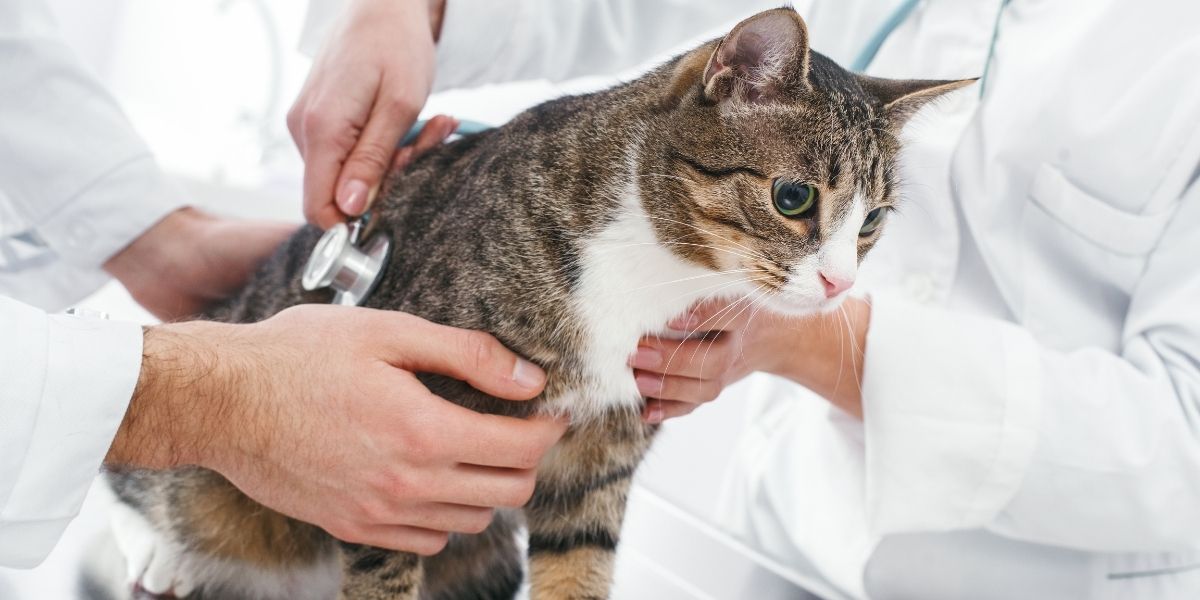Hyperthyroidism in cats – Causes. Symptoms. Treatment
Hyperthyroidism in cats is a condition manifested by an extensive production of thyroid hormones and a consequent increase in metabolic rate. The thyroid gland, composed of two thyroid lobes, is located in the neck, regulating the body’s metabolic rate.
Hyperthyroidism mainly affects older cats. Most often, tumours in the thyroid gland are benign or non-malignant. This disease affects most organs in cats, especially the heart.
What is hyperthyroidism in cats?
Hyperthyroidism in cats is a metabolic disease characterized by an excessive increase in thyroid hormones. An overactive thyroid can cause serious health problems, including problems with blood circulation or blindness. Cats that suffer from this disease and do not follow proper treatment die due to heart disease caused by hyperthyroidism.
The thyroid is a gland of two lobes located at the front of the neck. It is not an ordinarily palpable gland that secretes thyroid hormones (tetra-iodothyronine or thyroxine -T4- and tri-iodothyronine -T3-), regulating metabolism. The thyroid-stimulating hormone regulates the production of this gland, produced by the pituitary gland, which in turn is controlled by thyroid-releasing hormone (TRH), made in the hypothalamus.
Cats between the ages of 4 and 16 are more prone to this disease. The chances of cure are high if the condition is detected in time and the sick cat follows a specific treatment for hyperthyroidism.
Hyperthyroidism in cats – causes
A non-cancerous tumour causes hyperthyroidism in cats on the thyroid gland. In most cases, the tumour is benign, but sometimes it can be malignant. Therefore, it is essential to see your veterinarian if you notice significant changes in the cat’s behaviour for a correct diagnosis from a specialist.
Hyperthyroidism is the most common endocrine disorder in cats.
Hypermetabolism is produced by an excess of thyroid hormones, causing an acceleration of the body’s biochemical reactions. In over 95% of cases, it is an adenoma or adenomatous hyperplasia of the thyroid, and in 80% of cases, it is bilateral. Only 2% is due to thyroid cancer.
Hyperthyroidism affects the heart, kidneys and liver. The faster it is diagnosed, the quicker and easier it is treated. If it is not located in time, various secondary diseases can occur.
It has been found that cats that live in the home and those that consume commercial, industrial food in the form of canned food or that contain isoflavones are more prone to this disease.
Hyperthyroidism in cats – Symptoms
Hyperthyroidism in cats has different effects, as thyroid hormones are responsible for regulating metabolism.
The most common symptoms of hyperthyroidism in cats are:
– Weight loss, even if the cat has an increased appetite (polyphagia)
– Behavior changes (lethargy, hyperactivity, aggression, nervousness)
– Sarcopenia
– Tachycardia
– Hypertension
– Muscle weakness, tremor
– Vomiting, diarrhea
– The presence of nodules in the cervical area
– Polyuria/polydipsia
The untreated disease can lead to complications such as the onset of heart failure, liver and kidney disease, anemia, chronic emaciation or severe metabolic dysfunction that can cause the pet’s death.
Diagnosis
Hyperthyroidism in cats is a condition that must be treated immediately so that there are no complications which can endanger the pet’s life. The veterinarian takes a blood sample (hematological examination) and urine (complete biochemical test). Also, the investigations performed are abdominal ultrasound, chest radiography (for the evaluation of the cardiac silhouette and bronchi-bronchogram) and echocardiography (in which an enlarged left ventricle is often observed).
Treatment
The treatment for hyperthyroidism in cats aims to achieve euthyroid, i.e., stabilizing the concentration of thyroid hormones. The veterinarian will also administer certain medications to prevent hypothyroidism and the side effects of the disease.
The cat that suffers from hyperthyroidism and is on drug therapy needs clinical monitoring and laboratory tests. The first visit to the doctor is made 2-3 weeks after the start of treatment, and then the cat will be checked every three weeks until normal levels of thyroid hormones (euthyroid) are reached. Also, cats suffering from hyperthyroidism need a balanced diet, which contains a sufficient intake of dietary iodine (a diet low in iodine).
In some cases, your veterinarian will recommend surgical therapy, which involves surgical thyroid removal. It is an easy, fast and efficient procedure. Suppose this method of treating hyperthyroidism is used. In that case, it is necessary to administer a drug treatment for at least two weeks to stabilize the T4 levels and make the patient stable from a cardiovascular point of view.
Biotur Shop distributes pharmaceutical and organic products for pets and farm animals. Biotur Shop offers Felimazole, a treatment for hyperthyroidism in cats. The drug stabilizes hyperthyroidism in cats before surgical thyroidectomy and long-term treatment of hyperthyroidism in cats; the recommended starting dose is 5 mg per day. Whenever possible, the total daily amount should be divided and administered in the morning and evening. The tablets should not be split.
Biotur is a trusted distributor offering pet care products and medications to treat dermatophytosis in cats and other conditions.



